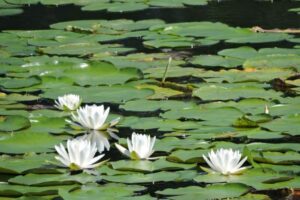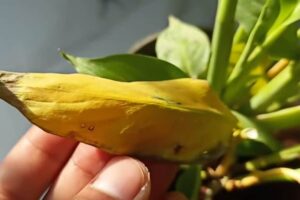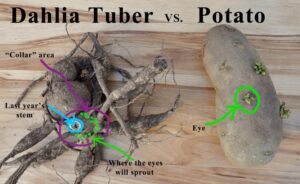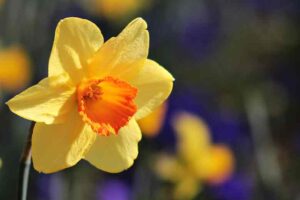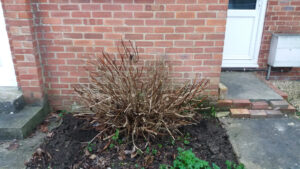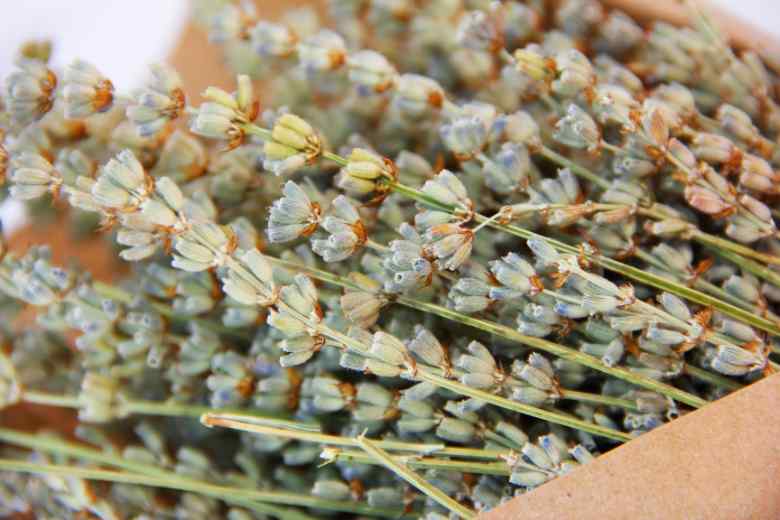
Lavender is a beautiful flowering plant that is often used to create a beautiful landscape in any garden. Unfortunately, sometimes the leaves of lavender can start to turn yellow. This can be a sign that something is wrong and needs to be addressed.
Although there are several potential causes for yellowing lavender leaves, ranging from environmental factors to nutrient deficiencies. To figure out why your lavender is turning yellow, you need to investigate the cause and take steps to address the issue.
The first step is to carefully examine the lavender plant for any other symptoms or signs that could provide clues as to what may be causing the yellowing. Here are some key things to look for:
- Are only the lower or older leaves turning yellow while new growth remains green? This is typically a normal part of the plant’s seasonal growth cycle as it sheds older foliage.
- Are leaves yellowing from the bottom up? This could indicate a problem with the roots or soil conditions like over-watering or lack of drainage.
- Are leaves spotted or puckered? Look for signs of fungal or bacterial diseases like powdery mildew, lavender rust, or gray mold.
- Are leaves dry and crisp? Wilting and discoloration caused by lack of water may be the issue.
- Do leaf spots or holes appear? Check for common pests like caterpillars, aphids, or spider mites that may be feeding on foliage.
What Causes Lavender to Turn Yellow
Once you’ve examined the plant closely, it’s time to start narrowing down possible causes based on conditions and other symptoms present. Here are some of the most common reasons lavender may be turning yellow and what can be done:
1. Overwatering:
Lavender has shallow roots and prefers well-drained soil. Soil that stays saturated for long periods causes roots to rot. Reduce watering frequency and make sure the soil has adequate drainage and aeration. Improve the soil with compost or sand if needed.
2. Underwatering:
During heat waves or drought, lack of water will stress lavender and cause wilting and yellow leaves. Water appropriately based on rainfall and monitor soil moisture levels closely. Deep watering is better than frequent light watering.
3. Cold Exposure:
Harsh and prolonged winter freezes can damage lavender plants which do better in zones 8-11. Provide winter protection with mulch or move containers to shelter during colder seasons if necessary.
4. Fertilizer Burn:
Too much fertilizer, especially nitrogen-heavy formulas, leads to soft, sappy growth vulnerable to stress. Only fertilize lavender in early spring and avoid it during summer. Use balanced, organic formulations.
5. Sunscald:
New growth yellowing on only one side of the plant usually indicates exposure to too much direct sun too quickly after a period of shade or cloudy weather. Gradually acclimate plants to full sun. Provide afternoon shade in summer.
6. Pests:
Check under leaves for signs of aphids, mites, or caterpillars. Isolate infected plants and treat them with neem oil, insecticidal soap, or approved pesticides if the problem is severe. Good sanitation and companion planting help prevent recurring issues.
7. Diseases:
Powdery mildew appears as a grayish, talcum powder-like coating. Rust causes reddish-brown spots. Gray mold forms fuzzy gray patches. Quarantine and remove diseased growth. Improve airflow, harvest spent blooms, and apply fungicides as directed.
8. Soil pH:
Lavender prefers alkaline, well-draining soil between 6.0 and 8.0 pH. Test soil pH and amend as needed with lime or sulfur to bring the level into this optimum range to support healthy root function and nutrient availability.
9. Nutrient Deficiency:
Besides adequate water, lavender needs nutrients from the soil to flourish. Yellowing between leaf veins could signal a lack of nitrogen, magnesium, or iron. Test soil and supplement with appropriate organic fertilizers or soil amendments tailored to the deficiency.
How to Prevent and Treat Yellowing Lavender
Now that you understand the potential causes, here are some effective solutions to try and restore healthy green growth:
1. Improve Drainage
The first step is ensuring the soil drains well by adding organic matter like compost, digging in sand or gravel, or planting on raised beds. Proper drainage is critical.
2. Adjust Watering
Allow the soil to dry out between waterings, watering only when the top few inches are dry. Overhead watering can further contribute to issues if the foliage remains wet.
3. Test Soil Nutrients
Have the soil tested to determine if it needs amendments to balance the pH and add important minerals like nitrogen, potassium, or iron. Fertilize accordingly.
4. Inspect for Pests
Carefully check under leaves and stems for signs of insects like aphids, mites or scale. Treat any infestations promptly according to product labels.
5. Improve Air Circulation
Prune out any dead or diseased growth and open up the center of the plant to allow airflow which reduces chances of fungal issues.
6. Provide Winter Protection
In colder zones, mulch lavender well or move containers to a sheltered spot for winter and remove mulch in spring once the danger of frost has passed.
7. Be Patient
It may take some time for new growth to appear as the plant recovers. Resist the urge to over-fertilize or overwater which could further stress it. Gentle care is best.
Note:
With some TLC, your lavender should start to perk back up within a few weeks once the underlying cause is addressed. Keep monitoring it and make adjustments as needed. Foliage may take longer to regrow but new green growth will show the plant is rebounding from the yellowing issue.
Tips for Caring for Lavender to Discourage Yellowing
To keep your lavender looking its best, you must practice certain techniques to discourage the yellowing of the leaves. Lets see some tips for caring for lavender to keep it healthy and vibrant:
- Water your lavender frequently, but avoid overwatering and let the soil dry out between watering.
- Provide your lavender with plenty of sunlight, which helps to prevent yellowing.
- Fertilize your lavender with a balanced fertilizer every month or two.
- Prune your lavender regularly to keep it from becoming leggy and yellow.
- Check your lavender regularly for pests, as these can cause yellowing.
- Move your lavender to a sheltered area in the winter to protect it from cold temperatures.
Conclusion
With some detective work and adjusting cultural conditions and care based on the cause identified, you can get lavender plants looking healthy and green again in no time. By taking measures to keep soil and plants in their ideal environment, you can help prevent yellowing issues as well. With a little TLC, lavender will reward you with beauty and fragrance for seasons to come.

